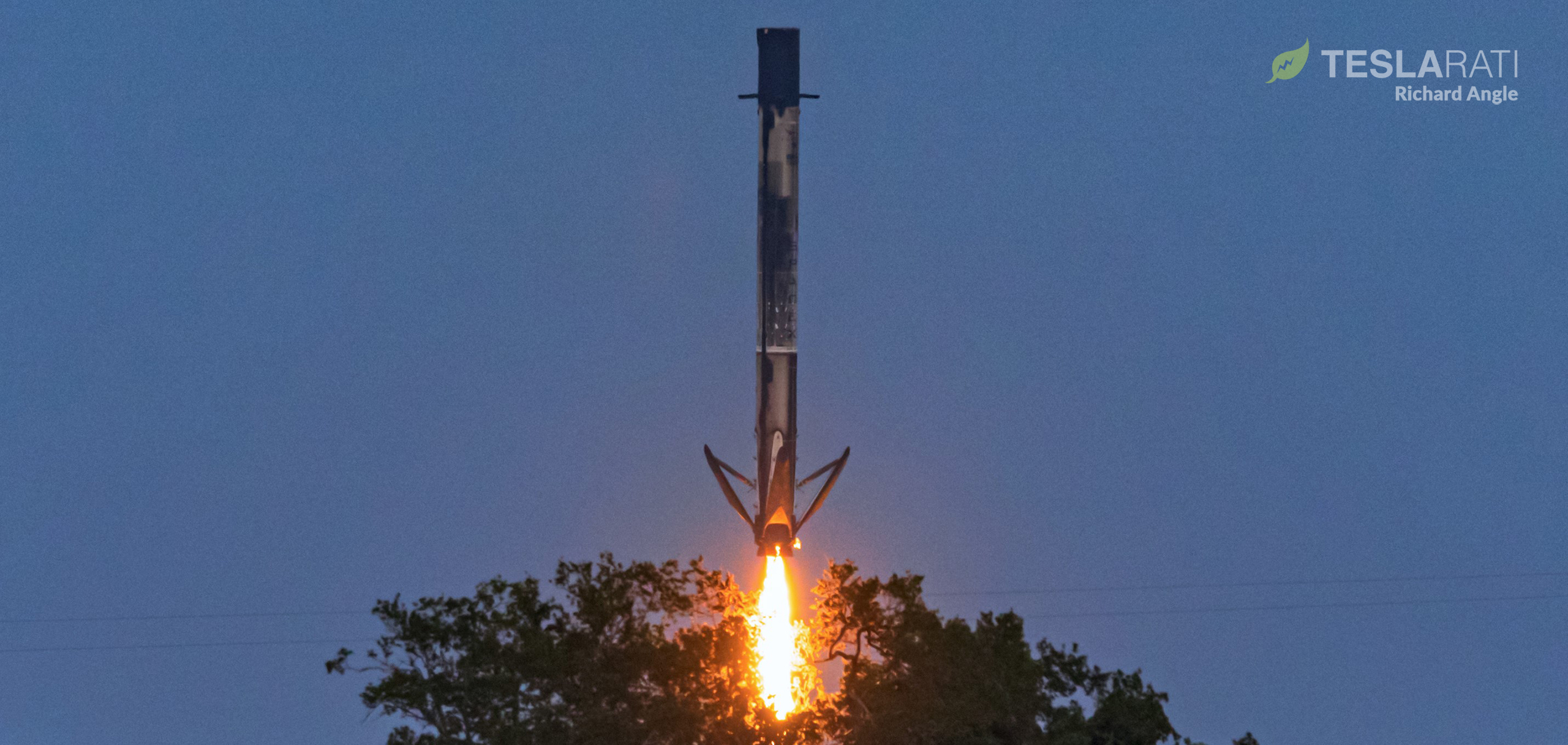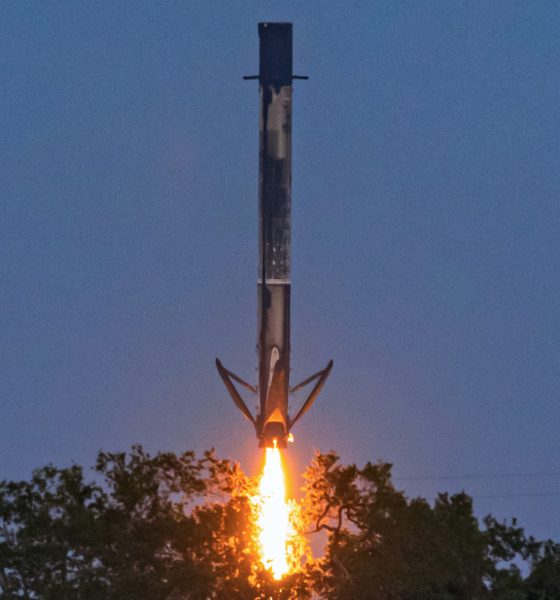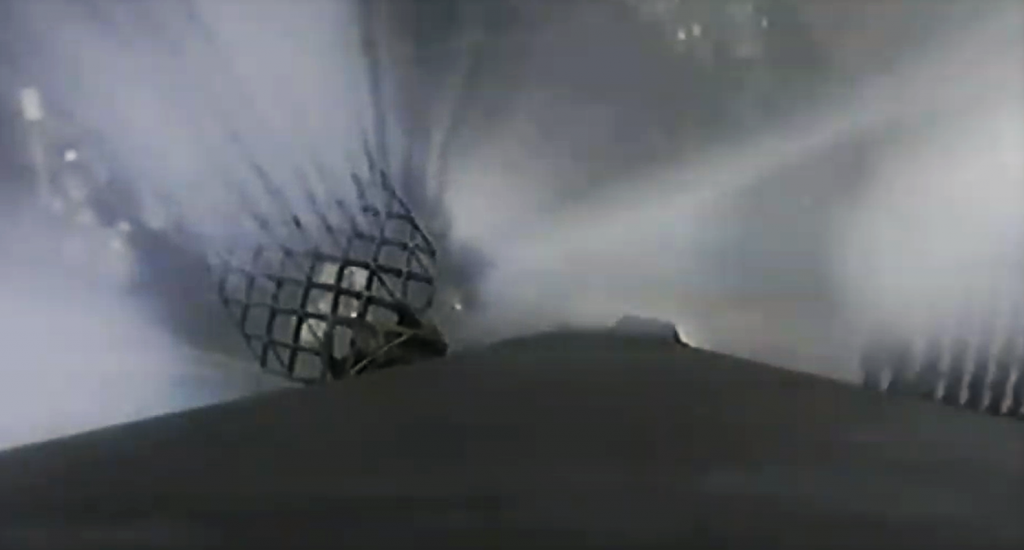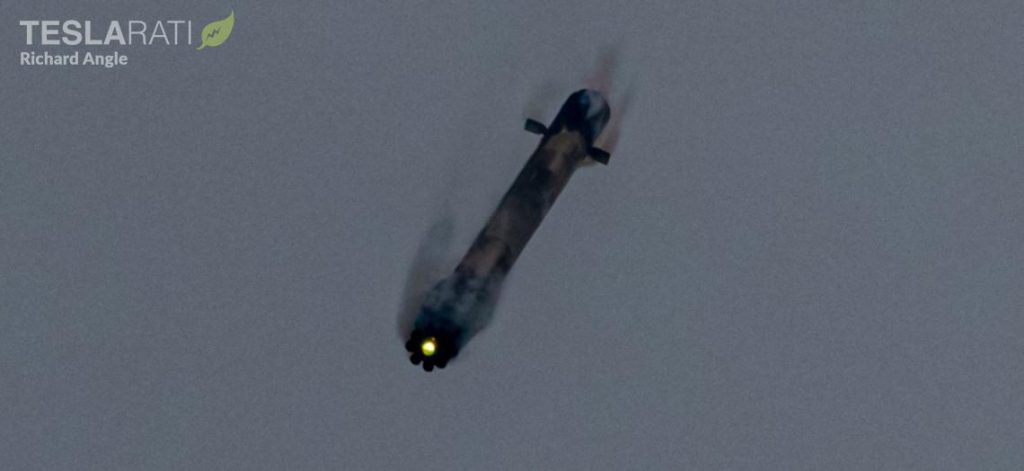

News
SpaceX changes the game with 100th rocket launch
Ending exactly five months of delays, SpaceX has completed the first polar launch from Florida in more than half a century, potentially changing the game for the US launch industry.
Coincidentally SpaceX’s 100th launch ever, the SAOCOM 1B mission’s success could significantly redefine what current and future US launch providers are able to achieve with a single launch pad. To pull it off, SpaceX managed to thread the needle between Florida storm cells, avoiding the same fate as the Starlink-11 mission that was scrubbed by inclement weather earlier today. Prior to that delay, SpaceX was targeting – and, based on past performance, would have likely achieved – two orbital Falcon 9 launches and landings in less than ten hours, what would have easily been the quickest back-to-back commercial missions in history.
At 7:18 pm EDT (UTC-4), Falcon 9 booster B1059 lifted off from Cape Canaveral Air Force Station (CCAFS) Launch Complex 40 (LC-40) for the fourth time in nine months. The rocket performed perfectly, sending an expendable Falcon 9 second stage (S2), a payload fairing, SAOCOM 1B, and two rideshare payloads on their way to orbit. Eight minutes after launch and roughly six minutes after stage separate, B1059 successfully returned to SpaceX’s Cape Canaveral Landing Zone (LZ-1) for a soft landing, becoming the first booster to do so in almost six months.


A brisk four minutes after Falcon 9’s first second stage engine cut-off (SECO) and orbital insertion, the rocket gently deployed the ~3000 kg (~6600 lb) SAOCOM 1B satellite. The Argentinian spacecraft extended its own solar arrays and began generating power just a few minutes later.
More than an hour after launch, rideshare payloads GNOMES-1 and Tyvak-0172 deployed as planned, officially completing the Falcon family’s 93rd fully-successful launch. Falcon 9 B1059’s fourth landing was also SpaceX’s 58th since the first successful booster recovery in December 2015.




While an otherwise routine and unexceptional mission, SpaceX has now proven that it’s possible for commercial launch providers to fly to polar orbits – orbits centered around Earth’s poles – from the East Coast. Since 1969, Cape Canaveral (and, far less often, Virginia’s Wallops) launch facilities have offered access to low Earth orbits, geostationary orbits, medium Earth orbits, lunar orbits, and interplanetary trajectories – just shy of anything but polar or sun synchronous orbit (SSO). To reach those orbits, launch providers have traditionally built entirely separate launch facilities on the US West Coast, mostly limited to California’s Vandenberg Air Force Base (VAFB) or, much less often, Kodiak, Alaska.
Building launch pads from scratch – or even reusing portions of old pads – is an extremely expensive and time-consuming endeavor, often taking at least 12-24 months and tens to hundreds of millions of dollars. Blue Origin, for reference, is likely spending $500 million to $1 billion or more to build a Falcon Heavy-class launch pad from scratch for its first orbital rocket, New Glenn. While much smaller rockets from startups like Firefly and Relativity need proportionally smaller and cheaper launch pads, pad construction still end ups being a major expense and hurdle for new entrants. Both Firefly and Relativity have already publicized plans to build two separate launch facilities at Vandenberg and Cape Canaveral.



Now, given enough excess performance for any given payload, it may well be possible for companies like them – particularly Relativity – to move directly to Florida without having to sacrifice polar and SSO launch capabilities that are most commonly used by small satellites. For Blue Origin, it could potentially save the company years of work and hundreds of millions of dollars if it can avoid having to build a second New Glenn launch pad in California. ULA has already expressed interest in exploring East Coast polar launches for its next-generation Vulcan Centaur rocket, potentially preventing the need for expensive changes to one of its California launch pads.
It remains to be seen if the US military will ultimately certify the new Eastern polar launch corridor for its high-value payloads and it’s unclear if the new corridor has any major inclination or cadence restrictions, but it’s safe to say that existing providers are going to eagerly take advantage of this new capability.
Check out Teslarati’s Marketplace! We offer Tesla accessories, including for the Tesla Cybertruck and Tesla Model 3.

News
Nvidia CEO Jensen Huang explains difference between Tesla FSD and Alpamayo
“Tesla’s FSD stack is completely world-class,” the Nvidia CEO said.

NVIDIA CEO Jensen Huang has offered high praise for Tesla’s Full Self-Driving (FSD) system during a Q&A at CES 2026, calling it “world-class” and “state-of-the-art” in design, training, and performance.
More importantly, he also shared some insights about the key differences between FSD and Nvidia’s recently announced Alpamayo system.
Jensen Huang’s praise for Tesla FSD
Nvidia made headlines at CES following its announcement of Alpamayo, which uses artificial intelligence to accelerate the development of autonomous driving solutions. Due to its focus on AI, many started speculating that Alpamayo would be a direct rival to FSD. This was somewhat addressed by Elon Musk, who predicted that “they will find that it’s easy to get to 99% and then super hard to solve the long tail of the distribution.”
During his Q&A, Nvidia CEO Jensen Huang was asked about the difference between FSD and Alpamayo. His response was extensive:
“Tesla’s FSD stack is completely world-class. They’ve been working on it for quite some time. It’s world-class not only in the number of miles it’s accumulated, but in the way it’s designed, the way they do training, data collection, curation, synthetic data generation, and all of their simulation technologies.
“Of course, the latest generation is end-to-end Full Self-Driving—meaning it’s one large model trained end to end. And so… Elon’s AD system is, in every way, 100% state-of-the-art. I’m really quite impressed by the technology. I have it, and I drive it in our house, and it works incredibly well,” the Nvidia CEO said.
Nvidia’s platform approach vs Tesla’s integration
Huang also stated that Nvidia’s Alpamayo system was built around a fundamentally different philosophy from Tesla’s. Rather than developing self-driving cars itself, Nvidia supplies the full autonomous technology stack for other companies to use.
“Nvidia doesn’t build self-driving cars. We build the full stack so others can,” Huang said, explaining that Nvidia provides separate systems for training, simulation, and in-vehicle computing, all supported by shared software.
He added that customers can adopt as much or as little of the platform as they need, noting that Nvidia works across the industry, including with Tesla on training systems and companies like Waymo, XPeng, and Nuro on vehicle computing.
“So our system is really quite pervasive because we’re a technology platform provider. That’s the primary difference. There’s no question in our mind that, of the billion cars on the road today, in another 10 years’ time, hundreds of millions of them will have great autonomous capability. This is likely one of the largest, fastest-growing technology industries over the next decade.”
He also emphasized Nvidia’s open approach, saying the company open-sources its models and helps partners train their own systems. “We’re not a self-driving car company. We’re enabling the autonomous industry,” Huang said.
Elon Musk
Elon Musk confirms xAI’s purchase of five 380 MW natural gas turbines
The deal, which was confirmed by Musk on X, highlights xAI’s effort to aggressively scale its operations.

xAI, Elon Musk’s artificial intelligence startup, has purchased five additional 380 MW natural gas turbines from South Korea’s Doosan Enerbility to power its growing supercomputer clusters.
The deal, which was confirmed by Musk on X, highlights xAI’s effort to aggressively scale its operations.
xAI’s turbine deal details
News of xAI’s new turbines was shared on social media platform X, with user @SemiAnalysis_ stating that the turbines were produced by South Korea’s Doosan Enerbility. As noted in an Asian Business Daily report, Doosan Enerbility announced last October that it signed a contract to supply two 380 MW gas turbines for a major U.S. tech company. Doosan later noted in December that it secured an order for three more 380 MW gas turbines.
As per the X user, the gas turbines would power an additional 600,000+ GB200 NVL72 equivalent size cluster. This should make xAI’s facilities among the largest in the world. In a reply, Elon Musk confirmed that xAI did purchase the turbines. “True,” Musk wrote in a post on X.
xAI’s ambitions
Recent reports have indicated that xAI closed an upsized $20 billion Series E funding round, exceeding the initial $15 billion target to fuel rapid infrastructure scaling and AI product development. The funding, as per the AI startup, “will accelerate our world-leading infrastructure buildout, enable the rapid development and deployment of transformative AI products.”
The company also teased the rollout of its upcoming frontier AI model. “Looking ahead, Grok 5 is currently in training, and we are focused on launching innovative new consumer and enterprise products that harness the power of Grok, Colossus, and 𝕏 to transform how we live, work, and play,” xAI wrote in a post on its website.
Elon Musk
Elon Musk’s xAI closes upsized $20B Series E funding round
xAI announced the investment round in a post on its official website.

xAI has closed an upsized $20 billion Series E funding round, exceeding the initial $15 billion target to fuel rapid infrastructure scaling and AI product development.
xAI announced the investment round in a post on its official website.
A $20 billion Series E round
As noted by the artificial intelligence startup in its post, the Series E funding round attracted a diverse group of investors, including Valor Equity Partners, Stepstone Group, Fidelity Management & Research Company, Qatar Investment Authority, MGX, and Baron Capital Group, among others.
Strategic partners NVIDIA and Cisco Investments also continued support for building the world’s largest GPU clusters.
As xAI stated, “This financing will accelerate our world-leading infrastructure buildout, enable the rapid development and deployment of transformative AI products reaching billions of users, and fuel groundbreaking research advancing xAI’s core mission: Understanding the Universe.”
xAI’s core mission
Th Series E funding builds on xAI’s previous rounds, powering Grok advancements and massive compute expansions like the Memphis supercluster. The upsized demand reflects growing recognition of xAI’s potential in frontier AI.
xAI also highlighted several of its breakthroughs in 2025, from the buildout of Colossus I and II, which ended with over 1 million H100 GPU equivalents, and the rollout of the Grok 4 Series, Grok Voice, and Grok Imagine, among others. The company also confirmed that work is already underway to train the flagship large language model’s next iteration, Grok 5.
“Looking ahead, Grok 5 is currently in training, and we are focused on launching innovative new consumer and enterprise products that harness the power of Grok, Colossus, and 𝕏 to transform how we live, work, and play,” xAI wrote.








